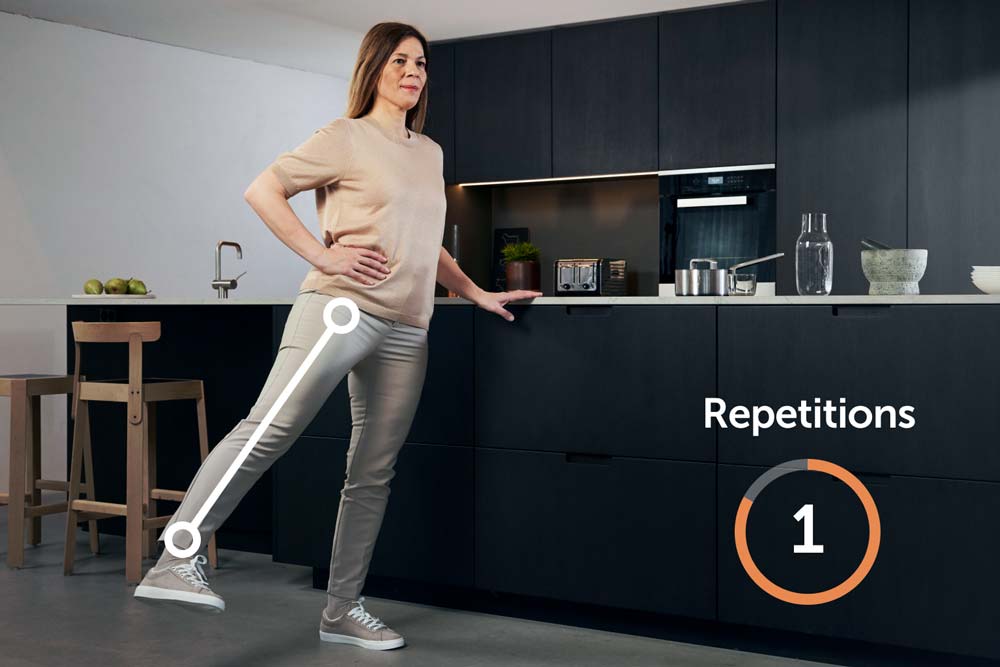The Desire for Surgery is the Strongest Driving Factor—Despite First-Line Treatment Helping 9 out of 10 Patients
July 11, 2022

Osteoarthritis is one of the world’s fastest-growing diseases. Increased life expectancy, a more sedentary lifestyle, and rising obesity rates have all contributed to the growing prevalence of joint pain. By 2032, 30% of all adults over 40 are expected to be diagnosed with osteoarthritis.
A Science-Backed Approach to Osteoarthritis Treatment
The osteoarthritis treatment pyramid is a well-established, evidence-based model that guides treatment decisions. At the base of the pyramid, first-line treatment consists of patient education and structured physical exercise, particularly individualized and supervised programs.
Patients should always start at the bottom of the pyramid rather than where most begin today—with painkillers in the middle of the pyramid. According to leading scientists and the Centers for Disease Control and Prevention (CDC), surgery should only be considered when other treatment methods have proven ineffective.
Today, research shows that only about 10% of osteoarthritis patients require surgery to achieve substantial pain relief and quality of life improvements. For the remaining 90%, first-line treatment—sometimes combined with pain medication—is enough to manage symptoms and enhance daily function.
New Study: The Strongest Driving Factor for Surgery is the Patient’s Own Preference
A recent study from Linköping University, analyzing 72,069 osteoarthritis patients, found that the majority did not require surgery within five years of completing first-line treatment. However, the study also highlighted a concerning trend:
- The strongest predictor of joint replacement surgery was the patient’s desire for surgery.
- Walking difficulties and pain severity were not strong predictors of surgery.
While it is natural that all healthcare decisions are voluntary, this finding suggests that many patients undergo joint replacement surgery when first-line treatment could have been a viable alternative—a treatment that is both cost-effective and risk-free compared to surgery.
Many Surgery Patients Could Have Benefited from First-Line Treatment
What is particularly concerning is that research shows no significant differences in age, BMI, or pain levels between those who begin first-line treatment and those who undergo surgery. This suggests that a substantial number of joint replacements may be avoidable with better awareness and access to early interventions.
Why This Matters for the Healthcare System
The U.S. healthcare system is already burdened with record-long wait times, including delays for joint replacement surgery. A widespread misconception persists among patients that surgery is the only effective solution—despite guidelines from the CDC, OARSI, and ACR recommending first-line intervention before considering joint replacement surgery.
The Solution: Increasing Access to First-Line Treatment
In Sweden, hundreds of thousands of osteoarthritis patients have been treated through Joint Academy’s digital treatment or via Supported Osteoarthritis Self-Management Programs (SOASP). Research—including the recent Linköping University study—shows that thousands of patients have changed their attitude toward surgery after undergoing first-line treatment.
The Benefits of First-Line Treatment Adoption:
- Shorter wait times for surgery by prioritizing the 10% of patients who truly need it
- Significant cost savings for healthcare systems and taxpayers
- Better patient outcomes without the risks associated with surgery
For healthcare systems, taxpayers, and most importantly, patients, the current approach is unsustainable. Expanding access to self-management programs and early intervention is the key to ensuring that those who truly need surgery receive it faster—and that unnecessary procedures are avoided.
It’s as simple as that.